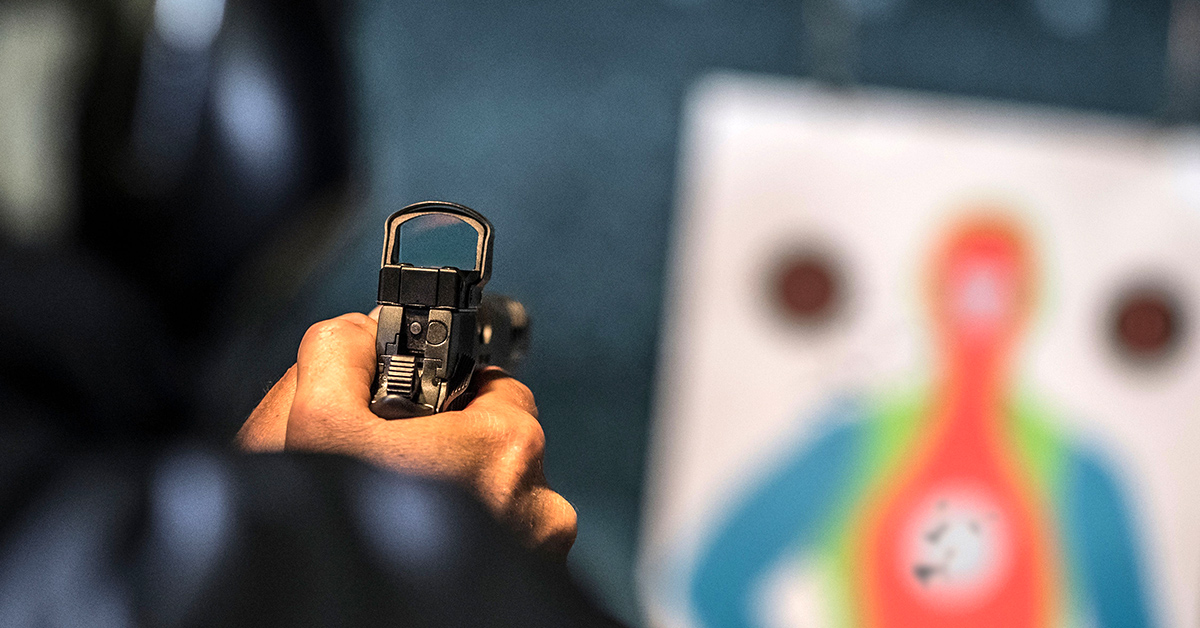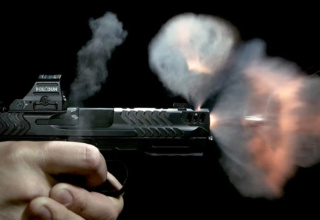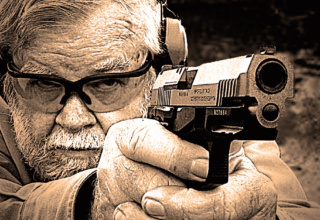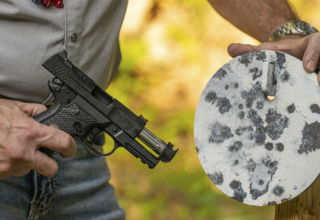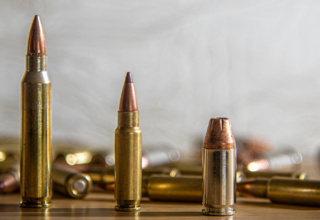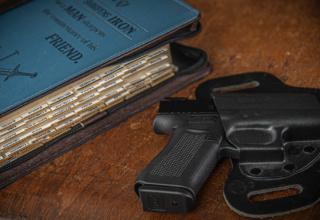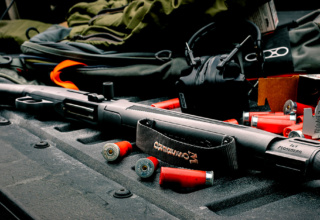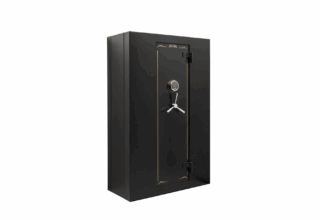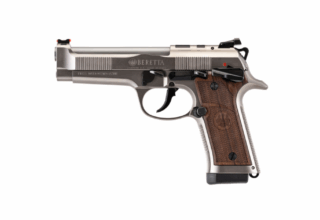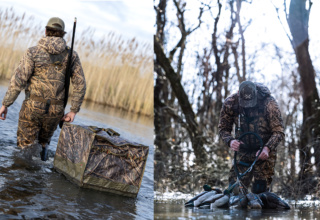For many, the 1911 is still the yardstick by which all defensive handguns are measured. If you’re considering transitioning to the 1911, here are some thoughts to ponder and training drills to get you going.
by Bob Campbell
A handgun doesn’t suffer fools. Proof is in the news every day.
The handgun I regard as the finest example of a lifesaving instrument that may be carried in a holster demands attention to detail and more training than most to achieve an acceptable level of competence. Institutional training time is precious. Most training — crime to court, airborne pathogens, crime scene management, traffic school, statement analysis — requires only a classroom. Training with the handgun requires more time, a considerable amount of ammunition, and a dedicated student to achieve good results.
The double-action-only striker-fired pistol demands less training time than other types and is the default issue handgun in most agencies. As individuals, we may carry a pistol — either cheaper and less effective than the Glock or more expensive and more effective. It is our choice. That is a good thing, and this freedom shouldn’t be taken lightly. We should make the most of it.
The 1911 has a certain appeal to many of us. This, someone said, is more than a pistol; it is a way of life. I agree. There is nothing wrong with owning a 1911 for range use and pride of ownership. But to carry the pistol and rely on it for personal defense, you need to go much deeper.
When the pistol is intended for personal defense, I expand my appraisal. I have worked up a transition course in training that I think suits the needs of shooters wishing to adopt the 1911. Corners cannot be cut. This must be done correctly. The prospective student is a shooter with some experience and familiarity with handguns. Just the same, a novice going through this course should be well-equipped for personal defense if they keep their practice going.
I was once in a position of being allowed — and the range instructor was a tough old revolver man — to carry the 1911 provided I could qualify at my revolver standard in half the time. It wasn’t the easiest thing to do. In those days, qualification included a stage at 50 yards. A Colt Series 70 Commander with factory ammunition would not make the accuracy cut. A Bar-Sto barrel and a handloaded 200-grain SWC/950 fps load helped me succeed.
Today, accuracy and reliability are not a problem, but the shooter must demand much of himself. Several institutional pilot programs demanded the shooter receive an expert rating with other issue handguns before proceeding to 1911 transition training. I think this is a reasonable requirement.
I recently looked over transition courses from the Detroit PD and LAPD. Each agency allowed the 1911 to be carried with proper training. My information may not be current, but it is certainly interesting. Prior qualification with the standard institutional-grade handgun was required and the transition course was a minimum of thirty hours. That is thorough, and the only police training course I am aware of in which the history of the handgun in the course was covered.
The expenditure in gear, including purchasing your own handgun, holster, and ammunition, approaches two thousand dollars…or much more, depending on the handgun. You must believe in the 1911 to dedicate those funds and that much of your time and your own dime to training. The end result is worth the trouble.
Hats off to officers who qualified with other personal choices, including the HK USP and SIG P220.
Approach this transition with humility. While what you have learned before is helpful, the 1911 handgun is a demanding mistress.

Another perquisite (and not a suggestion) is that you choose a quality 1911. Recreational-grade handguns will not make the cut. Some are of poor cast parts, MIM parts, and some have suffered safeties that break off and off-center freed ramps. They are seldom reliable. It is poor economy, indeed, even foolish, to expect a cheap handgun to make it through a transition class.
Beginning with the Springfield Garrison, you have a dependable 1911 that will make the cut in reliability. The Springfield Loaded has more features, including an ambidextrous safety. The Colt 1911 Government is a good choice, as is the Competition Model Colt with its fiber optic front sight. LAPD uses the Kimber Custom II. Ruger’s SR 1911 has proven reliable. If you can afford a Dan Wesson, do so. You won’t regret the purchase.
The Springfield Tactical Response Pistol is at the top of the heap. As the man says, quality remains after the price is forgotten.
I would not recommend a Commander-type pistol for transition training. A five-inch barrel Government Model is the better shooter and exhibits less recoil. A quality steel frame Commander such as the Garrison 4.25-inch gun is a reasonable choice but you should train with the Government Model length in the beginning.
Good magazines are demanded. Springfield and Colt factory magazines are excellent. Mec Gar will do. Wilson Combat magazines are the standard by which all others are judged, and these will function reliably through many thousands of rounds of ammunition.
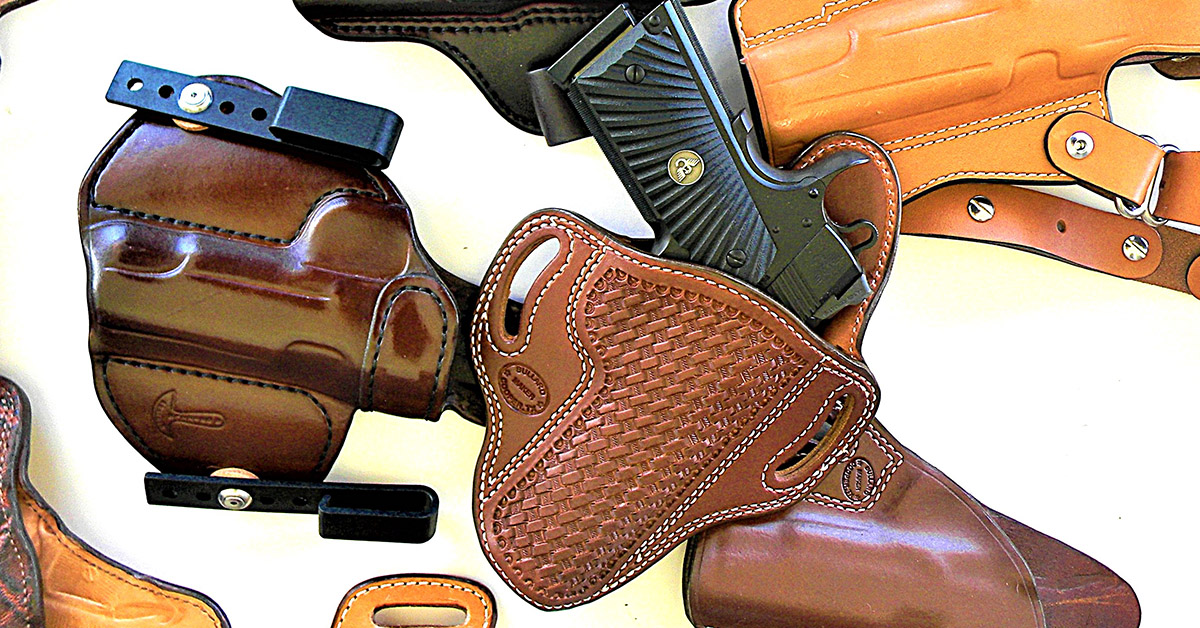
Don’t show up in class with a cheap holster. You will find that fabric crap to be a chafing nuisance. The Galco Combat Master is a choice for most uses. The Galco Corvus is a well-designed Kydex holster if you prefer. The DeSantis Speed Scabbard is useful, and if you like a thumb break design, the Speed Scabbard fits the bill. You may prefer a scabbard type to most concealment holsters since the scabbard’s offset from the body makes for a smoother draw in transition training.
With a quality handgun and holster squared away, don’t forget a thick and rugged holster belt. I own some that are well worn but twenty years old or more. Not one errant thread! Be certain to purchase a proper load-carrying device combination. A holster, belt, and magazine carrier may be purchased together, and then you are in good stead.
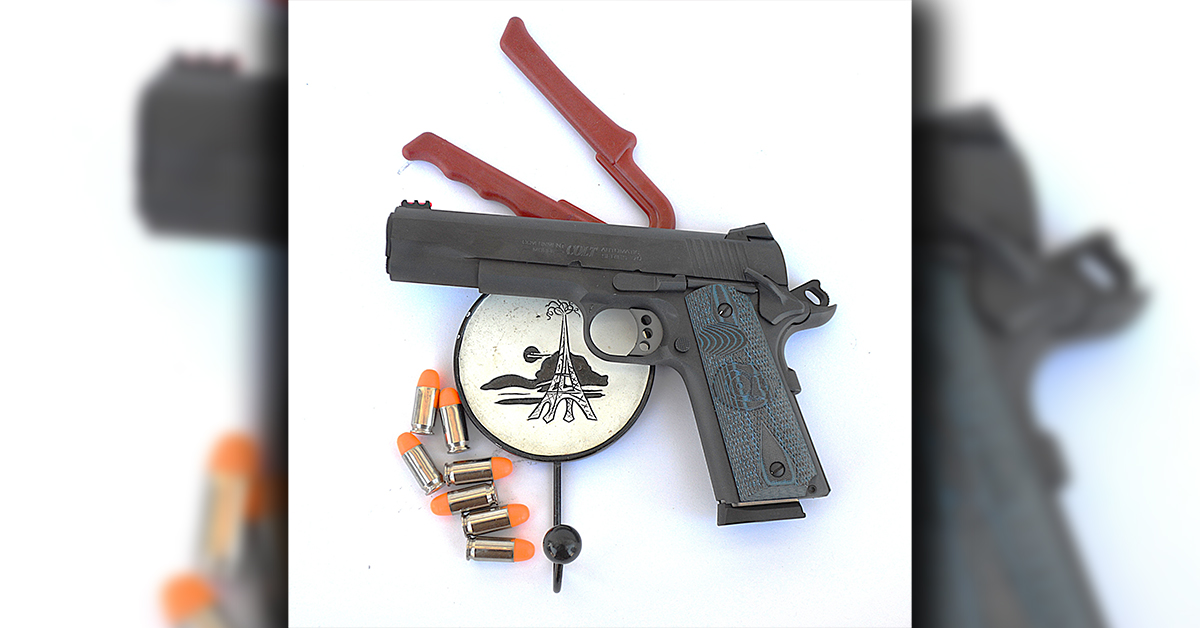
Next comes dry fire and manipulation. Don’t short-change yourself in this module. It is as important as live fire. Practice manipulating the slide, operating the slide lock safety, grip safety, and magazine release.
The proper means of loading the 1911 is to lock the magazine firmly in place with the slide locked to the rear. (Employ a dummy round for this practice.) Using the slide lock, or simply grasping the rear of the slide, allow the slide to snap forward to load the chamber. Don’t be easy! The cartridge may not properly chamber if you don’t allow the slide to snap forward.
Practice manipulating the safety on and off. A properly set up 1911 safety will snap into place sharply with a distinctive click. Improperly fitted 1911 handguns will be mushy and not lock in place effectively.
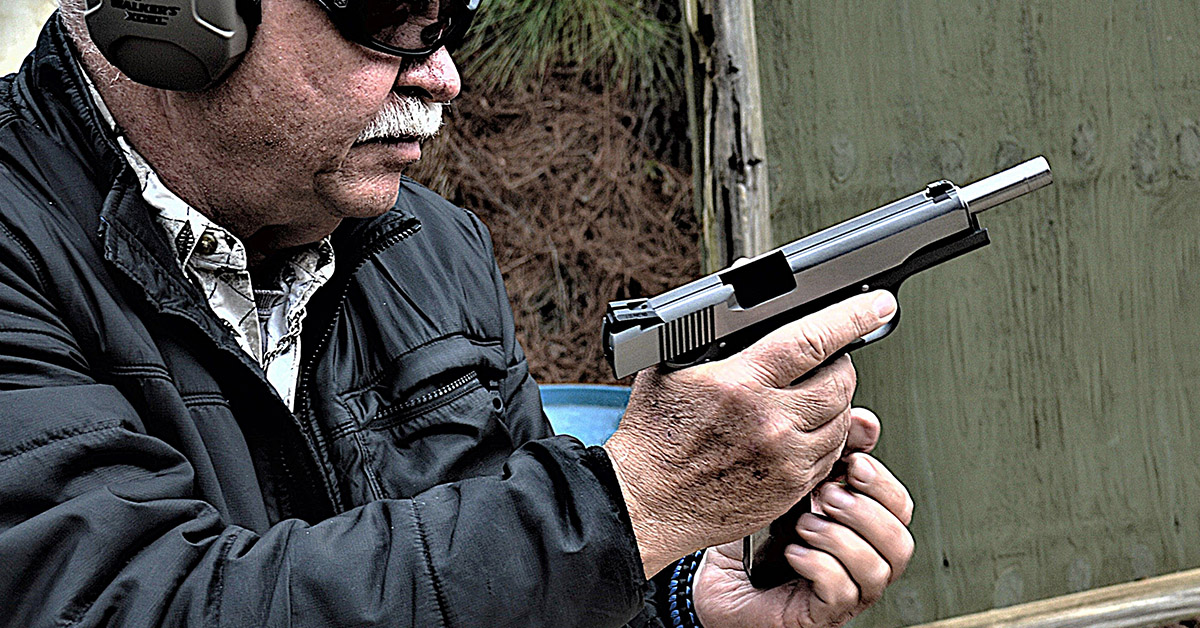
Practice pressing the trigger to the rear smoothly and breaking the shot cleanly. Dry fire until you have got it right every time.
Practice unloading the 1911. With the pistol held securely, remove the magazine. Next, with the weak side palm over the slide, push the slide to the rear. The chambered round will fall into your hand. If you forget the sequence and don’t remove the magazine first, don’t let it happen twice!
Practice the press check, ensuring the chamber is loaded with a cartridge until it is second nature.
A refresher in safety rules is always good when moving to a new type of handgun. A qualified instructor should inspect the student’s ability at manipulating the 1911. Proper loading and unloading come first. Next, the student should be graded on holstering the 1911 properly with the hammer cocked and locked and the finger alongside the frame, moving the finger alongside the holster as the piece is holstered.
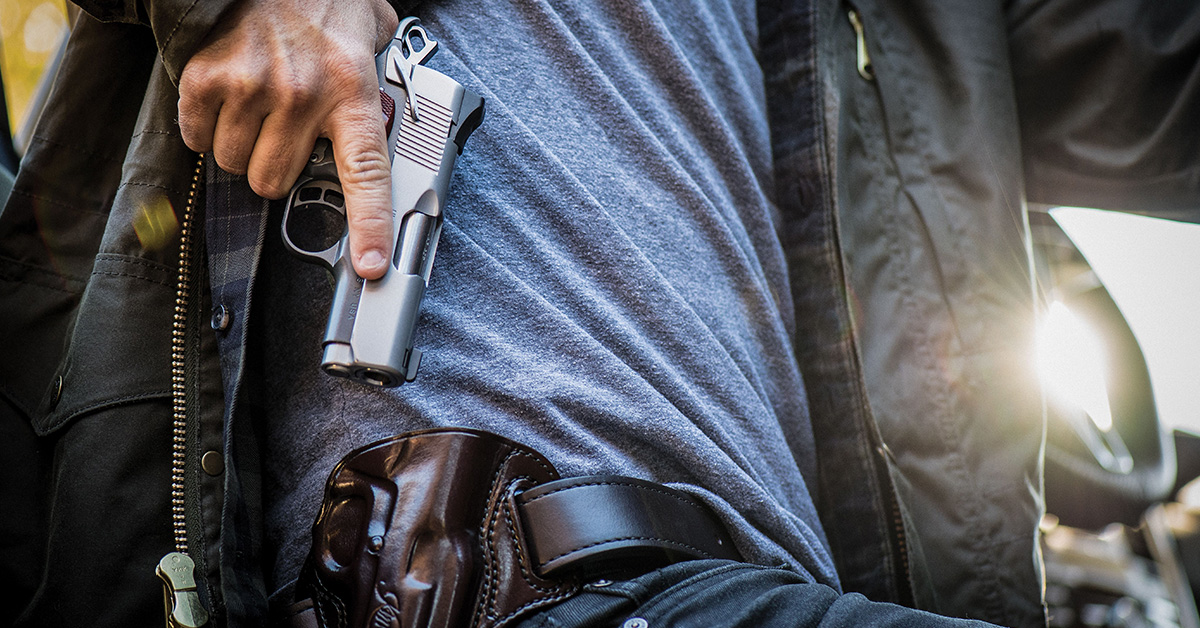
The student must learn to draw and get on target with the pistol, swiping the safety off as he gets on target and be proficient in placing the safety back on safe. Since the AR-15 and 1911 require a similar motion to manipulate the safety, many students proceed quickly with this drill. If they do not pass this drill, they re-train until they do and do not proceed to the firing stage until safety manipulation is squared away.
The 1911 is unique in that a transition course should include a short course on the history of the pistol. Development of the 1911 followed the revelation of the Colt .38 revolver’s terrible shortcomings in wound potential. The insistence of the US Army on important safety features — including the slide lock safety and grip safety, and the pistol’s use in World War One and World War Two — should be discussed.
The pistol should not have an extended slide lock or gas pedal-type safety that could interfere with normal handling. No aftermarket parts are allowed, save perhaps a set of grips. The pistol must be of high quality and in good mechanical condition. Standard 1911 safety checks, including testing the trigger action for safety, must be executed. A trigger action of less than 4.5 pounds may be deemed unacceptable for service use.
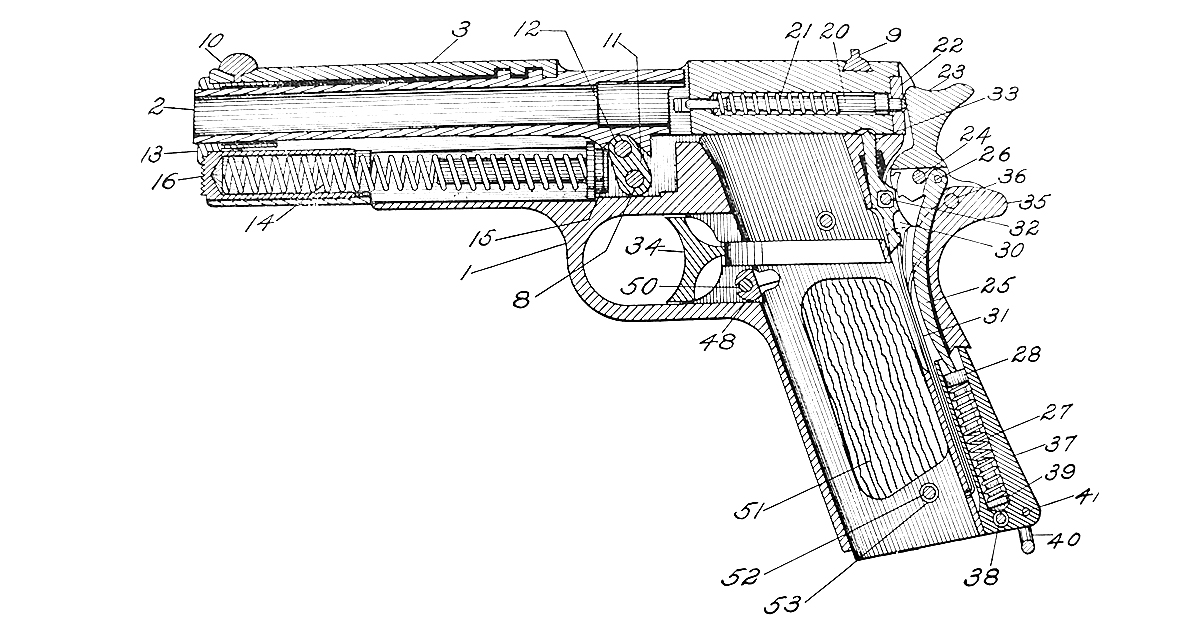
The student will then execute a field strip and disassembly — not a detail strip but a takedown as needed for cleaning. The student must understand how to strip the pistol for cleaning and must understand that a 1911 demands greater lubrication than some types of handguns. Lubrication points are stressed. The student must demonstrate the ability to remove the firing pin, firing pin stop, and the extractor, and be able to check these parts for function and return them to their proper position. The shooter must be able to inspect the slide rails and slide ways, and show competency in disassembling the magazine floor plate, follower, spring, and reassemble.
The student must demonstrate a knowledge of the parts of the pistol, such as the slide, frame, barrel, barrel bushing, barrel link, recoil spring, recoil guide, thumb safety, slide lock, recoil spring plug, firing pin, firing pin stop, extractor, magazine well, magazine, magazine follower, magazine floor plate, magazine spring, and understand the difference between Series 70 pistols and the Series 80 firing pin lock.
When the time for live-fire begins, the student must have passed all previous requirements.
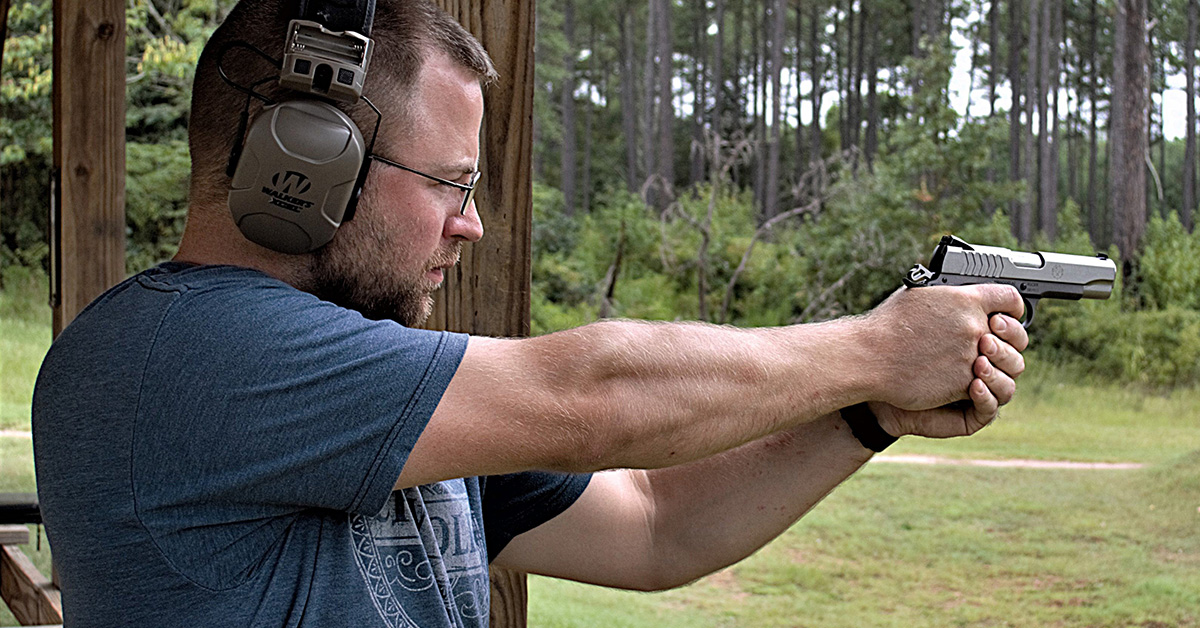
The grip is a solid two hand grip. The thumbs are locked and forward. A thumb under the safety may result in the safety being pushed upward during recoil, and this must be stressed. The student practices hitting the grip safety as the pistol is drawn and the slide lock safety as the pistol comes on target.
Some students will find that the thumbs-forward grip creates a pocket in the palm that prevents application of the grip safety. This isn’t a great problem with quality guns featuring the proper grip safety tension. The grip safety should release its hold on the trigger about halfway into safety compression. By the same token, most quality 1911 handguns feature a sharp indent with the thumb safety. If the student fails to actuate the grip safety, training will address this issue. The shooting course concentrates on grip, stance, breath control, sight alignment, sight picture, trigger control, and follow-through. I won’t push one type of stance or another as the best structure as, biomechanically, the Weaver and the Isosceles work well for different students.
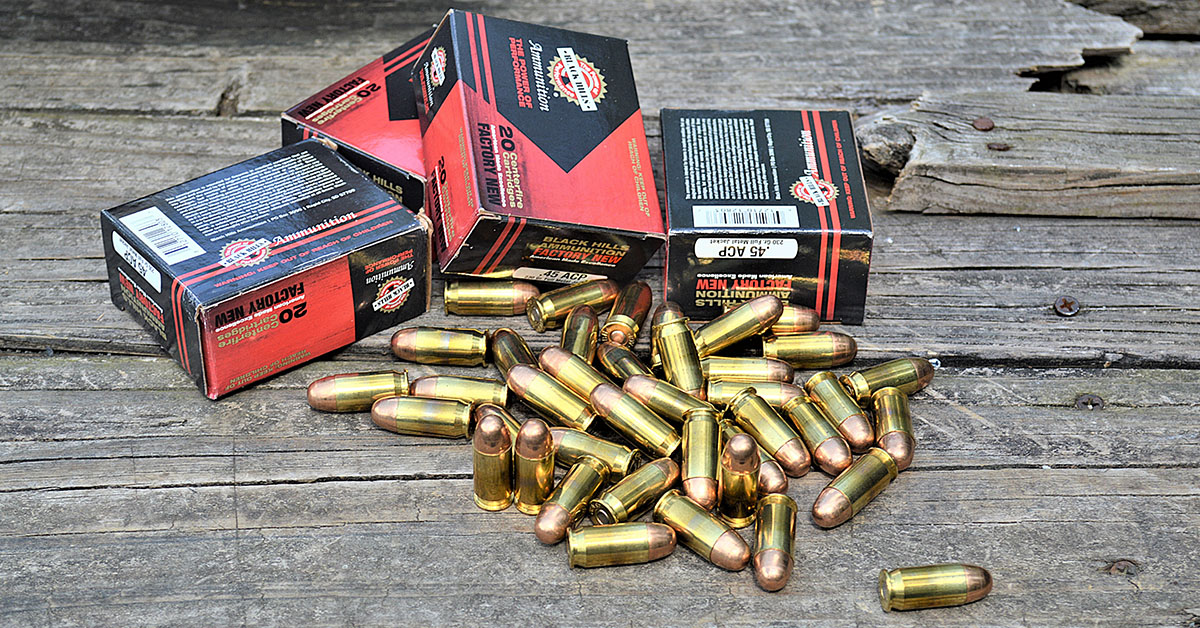
In the transition course, a passing grade requires two qualifications with ball ammunition and one with the duty load. Don’t go cheap on ammunition. Don’t show up to class with steel case ammunition or second-quality loads from the Pacific Rim. If you have a malfunction, you will not pass the course. Ammunition from Black Hills Ammunition, Federal American Eagle, Fiocchi, Speer, Remington, or Winchester in 230-grain FMJ should deliver the desired results. The duty load should exhibit a balance of expansion and penetration with full powder burn and good accuracy potential. The Federal Hydra Shock or Federal HST, the Black Hills Ammunition 230-grain JHP, Hornady XTP and Critical Duty, or Speer Gold Dot are among the loads I find acceptable. The qualification course should stress combat ability and firing at close range to twenty-five yards.
I borrowed heavily from the FBI qualification. This qualification is more stressful and demanding than many and takes place over eight stages with a total of sixty rounds fired. I don’t usually demand my students fire from kneeling, but I do fire from a barricade/cover firing position.
When you pass this course, you will be a competent shooter in what is basically an incompetent world. Speed is stressed at short range, accuracy at long range. Due to an old injury, my personal challenge is non-dominant hand fire. Stage five (below) is best addressed by loading the handgun with four rounds of ammunition, and the spare magazine used in speed loading should also be loaded with four rounds.
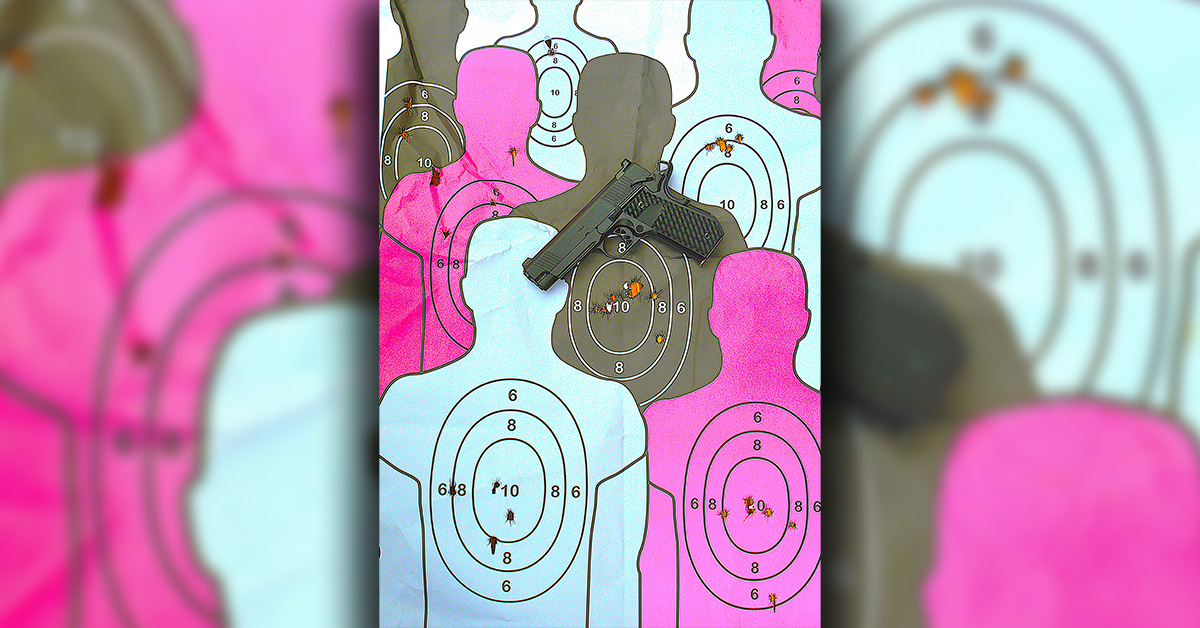
- Stage 1: 3 yards, 3 seconds. Draw and fire three rounds with the strong hand only. Repeat.
- Stage 2: 3 yards, 8 seconds. Draw and fire three rounds, strong hand only; fire weak hand 3 more rounds.
- Stage 3: 5 yards, 3 seconds. Draw and fire three rounds. Execute this stage a total of four repetitions.
- Stage 4: 7 yards, 4 rounds, 4 seconds. Draw and fire. Repeat.
- Stage 5: 10 yards, 8 seconds. Draw, fire four rounds, perform a tactical reload, then fire four more rounds.
- Stage 6: 15 yards, 6 seconds. Draw and fire three rounds. Repeat.
- Stage 7: 15 yards, 8 seconds. Draw and fire four rounds.
- Stage 8: At the 25-yard line, you will draw and fire from the standing barricade position. Fire two rounds and then begin again, re-holstering the handgun, drawing, and firing three more rounds. Repeat. Fire twice with ball ammunition and once with service hollow point loads with a resting period between.
It would be wise to include a regimen with hammers (two fast rounds at close range), double taps, and controlled pairs for continuing practice.
To consider yourself ready to deploy a 1911 handgun, you must complete this transition course and pass.
If you are carrying the pistol for uniformed duty, then the transition gear will be different — service-grade belt holsters and magazine carriers versus concealed carry gear.
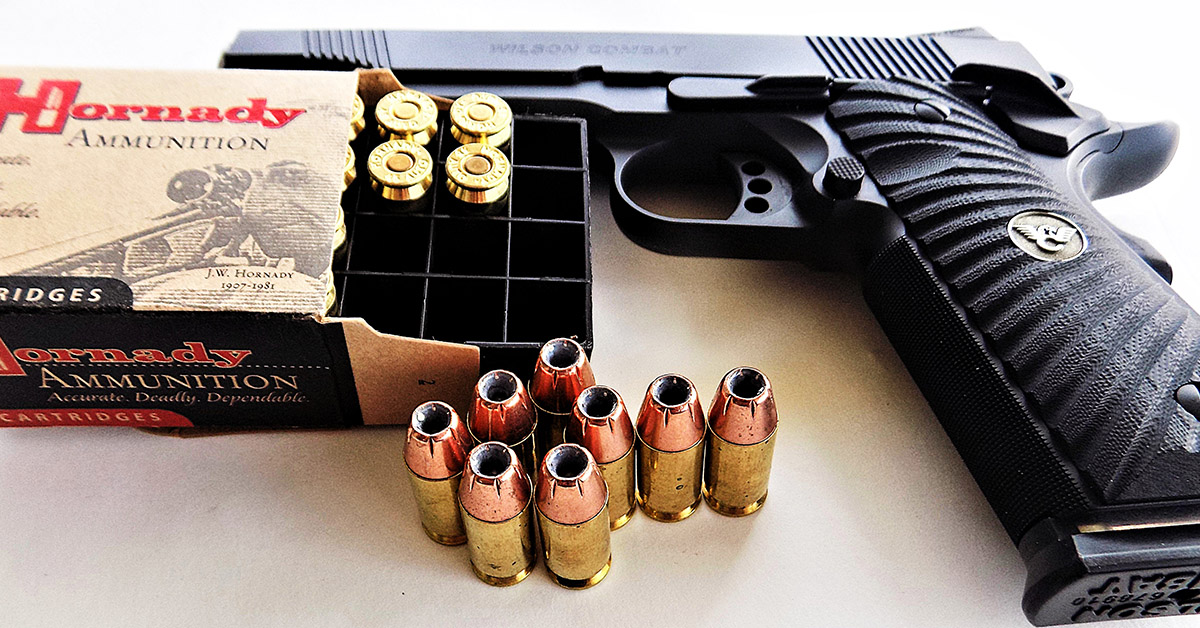
Once you have passed this transition course, continued training is vital. While street crime is sometimes random, some criminal gangs seem to have an intelligence system shrewder than the CIA. They will attempt to invade your home with superior numbers and firepower. Not training is a bad idea for every reason imaginable. My training must be relevant to my actions based on legality and I must be well informed and objective. So must you.
I must state also that losing a fight is unthinkable and getting shot isn’t optimal. Recovery includes confinement, a bit of depression no matter your support group, and an interminable amount of itching while the wounds heal.
Just a happy thought to close the story.
A crucial analysis shows the 1911 to be a formidable defensive tool. Choices range from rail guns with optics to contemporary minimalist. While the man or woman behind the gun is most important, choose a quality, effective weapon.

